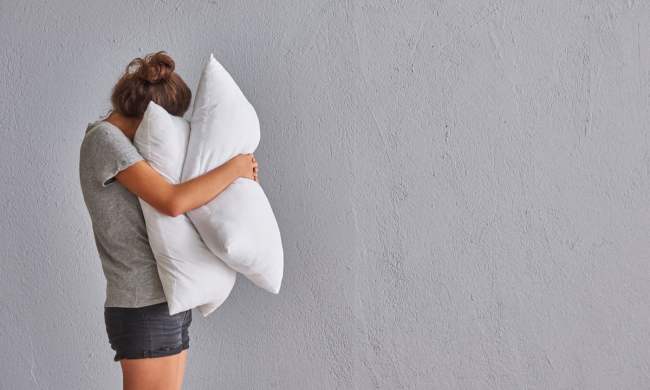When the dust settles on your painting project and you’re admiring the finished result, you may not even notice the drips or smears of paint on your clothes. Once the paint dries on your clothes, however, your typical laundry process may not be enough to get those paint splashes out. Don’t toss the garment out yet, though. We’ll walk you through how to get dried paint out of clothes based on the type of paint used.

How to get paint out of clothes: Water-based paints
Water-based paints are some of the most common paints used in both arts and crafts as well as interior surface painting. The good news is it’s also the type of paint that’s easiest to get out of fabrics without staining. Here’s how you do it.
How to get watercolor paint out of your clothes
Crafting is a great pastime, but it’s also a messy one. If you get some of those watercolors on clothing, here’s how to get it out.
- Turn the garment inside out and try to flush as much paint out of the material as possible from the back.
- Turn the garment back to right side out.
- Mix a solution of one cup water and one tablespoon dish soap.
- Dip a clean rag in the solution and dab the paint stain on the garment.
- Wash the item in the laundry cycle as normal.
How to get acrylic and latex paint out of clothes
Both acrylic and latex paints are considered water-based, and they’re commonly used to paint walls, trim, doors, and ceilings. Painting large surfaces often results in splashes, sprays, and drips of paint that inevitably make it onto your clothes. These paints dry pretty fast, so it’s important to act quickly to avoid permanent stains. Here’s how to remove the paint spots.
- If the paint is still wet, flush it out of the material with water.
- Then, use a standard laundry stain remover to treat the stained area before washing the item in the laundry cycle as normal.
- If the paint has dried on the material, you can dab some nail polish remover or rubbing alcohol on the stain before laundering.
- If the stain persists after using alcohol, try spraying it with an alcohol-based hairspray, and leave it to sit on the stain for about 10 minutes.
- Use a toothbrush to scrub the hairspray into the stain, and then run the garment through the wash cycle again.

How to get oil paint out of clothes
Oil-based paint is extremely durable and long-lasting, which is why it’s used on wall trim and in high-impact areas like hallways and entryways. Its durability also makes it tough to get out of clothing. The best way to prevent stains from oil-based paint is to act fast while the paint is wet.
- If the paint is still wet, scrape off as much as you can.
- Use a clean cloth to blot the area.
- Rinse the spot with hot water from behind the fabric to flush out the wet paint. It’s important to keep the spot wet when you’re trying to remove oil-based paint.
- Mix together one part clear ammonia, one part water, and one part dish soap.
- Soak the paint spot with the mixture and allow it to sit for 30 minutes before washing in the regular laundry cycle.
If the paint hasn’t come out, or if it dried before you caught it, you’ll likely have to use a paint thinner or remover to get the spot out. Check the label of the paint can for the recommended paint-removing product from the manufacturer.
- Place the garment on a clean towel to prevent the paint remover from damaging any surfaces.
- Blot the paint remover onto the spot with a clean rag until it’s soaked with the product and the paint starts to separate.
- Mix one cup of water with one tablespoon of dish soap, and blot the mixture onto the spot.
- If there’s still discoloration on the spot, treat it with a laundry stain remover before tossing the garment into the regular wash cycle.
Tips to make removing paint from clothes easier
- Try to catch the paint while it’s still wet. The longer the paint sits, the quicker it will dry and the heavier the stain will be.
- Only use paint remover as a last resort. While the manufacturer’s recommended paint remover may be the only option for dried, stubborn paint stains, it could also damage fabric.
- Always spot-check a cleaning agent first. Different clothing materials react differently to chemicals and cleaning agents. Check the clothing label before treating the paint stain, and always spot-check the ingredient you’re using on an inconspicuous area of the garment, like the inside of the sleeve cuff.
Painting can be a fun project, but getting paint on your clothes is never a joy. You don’t have to toss that paint-spattered garment, though. Use one of the paint-removing methods on our list, and restore that clothing item to your wardrobe, stain-free.



